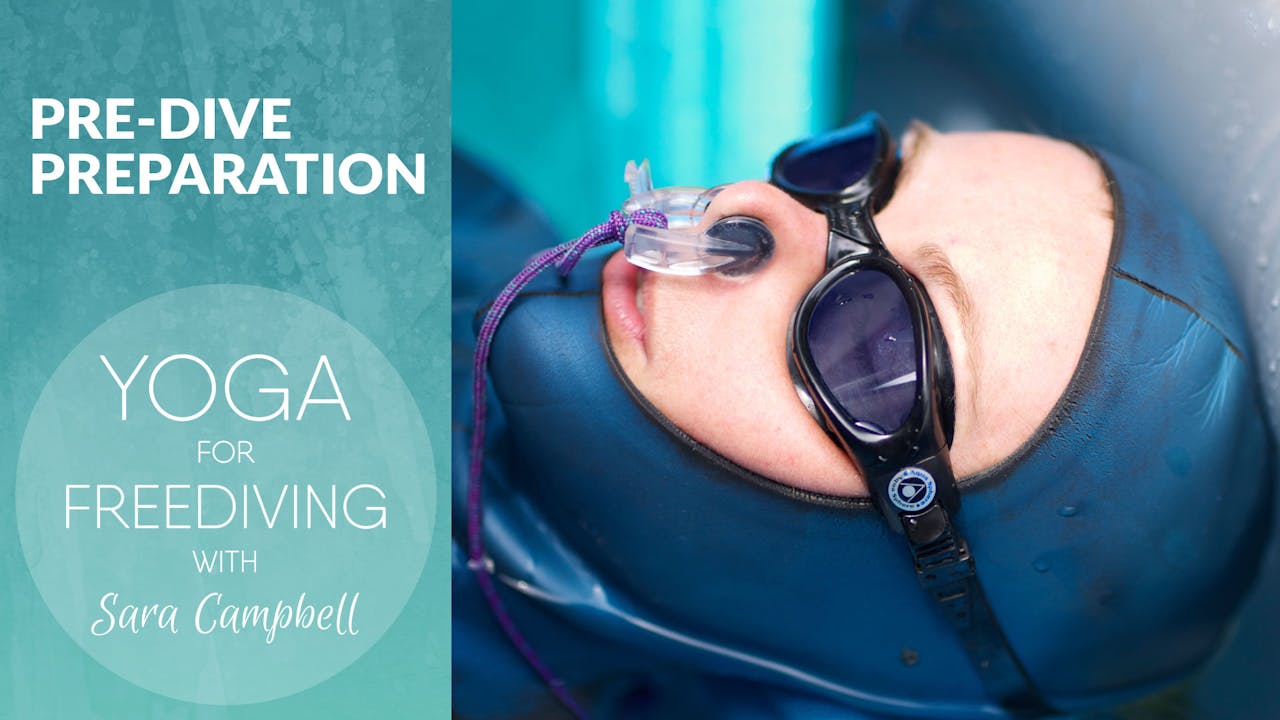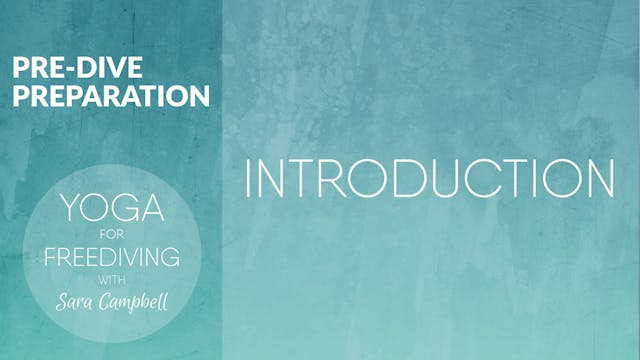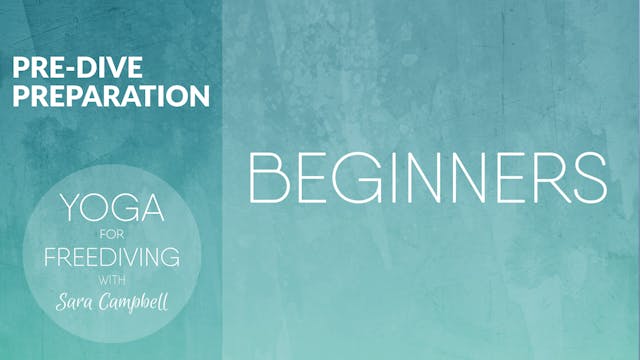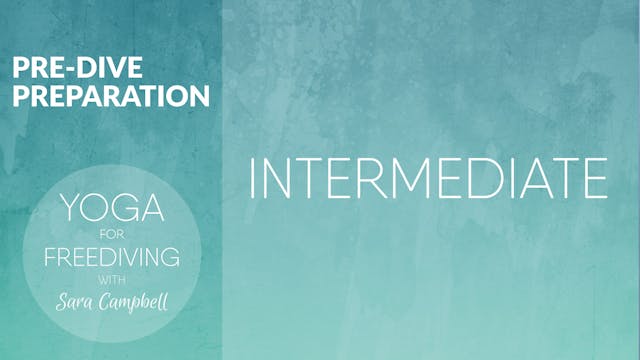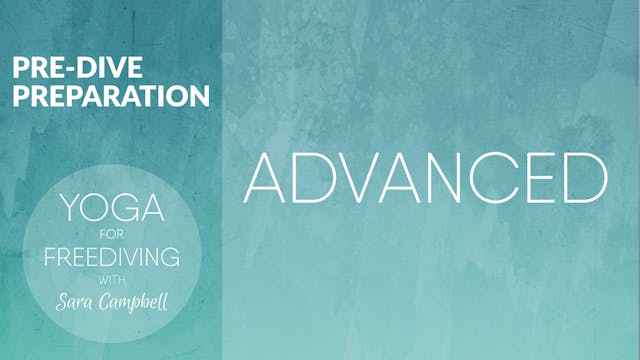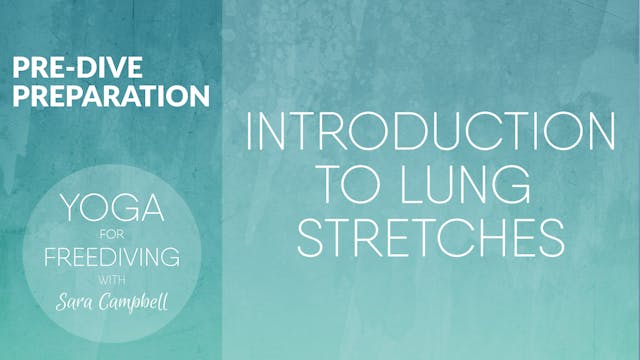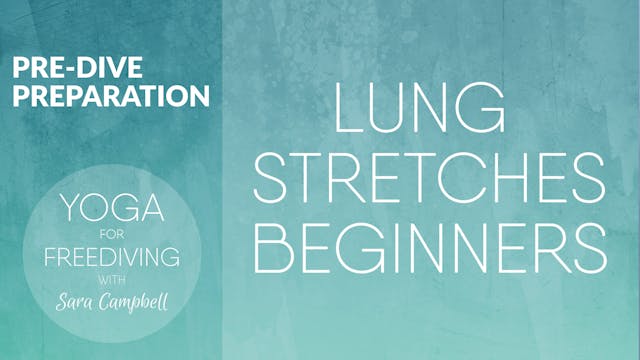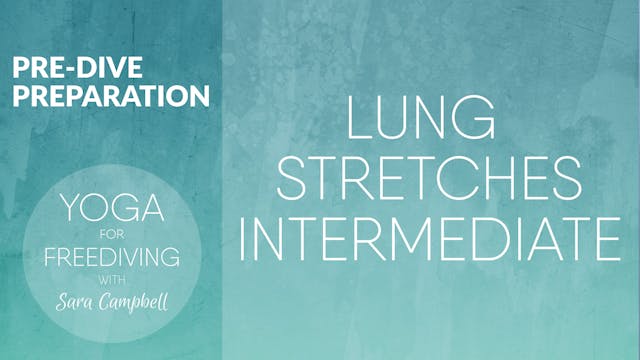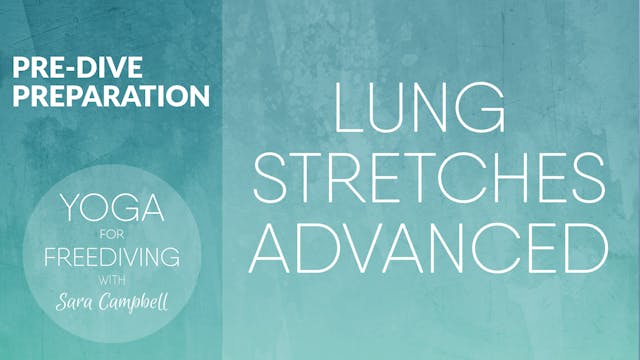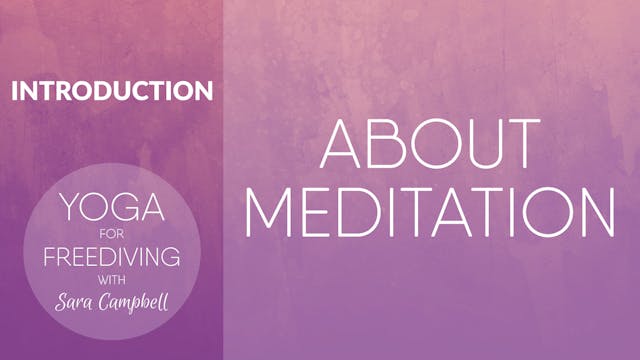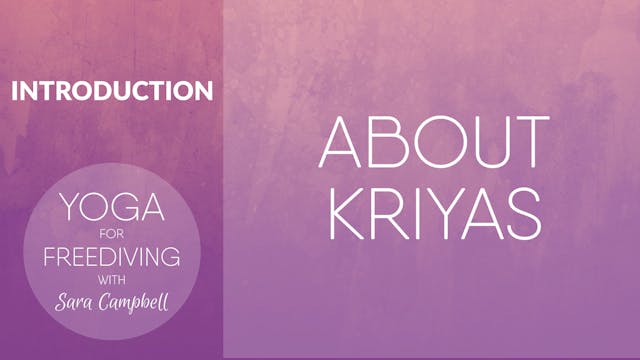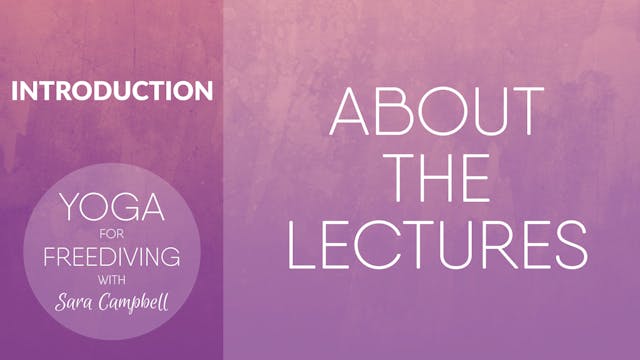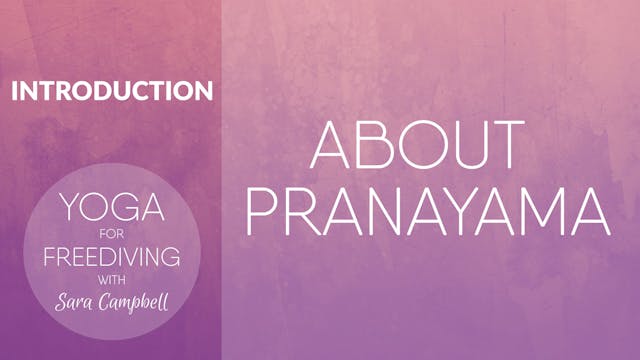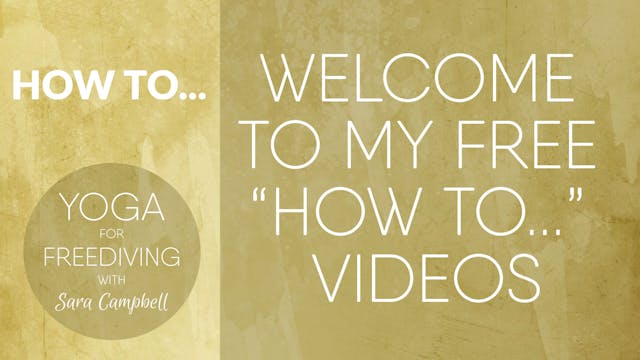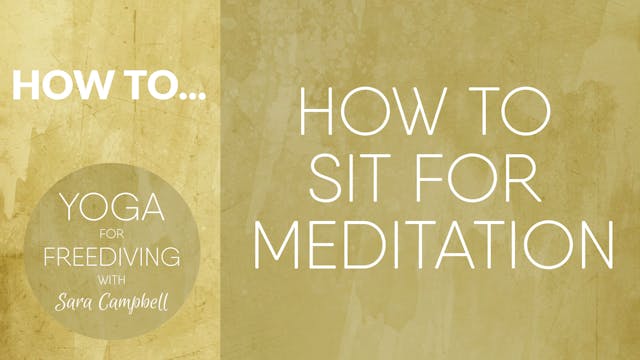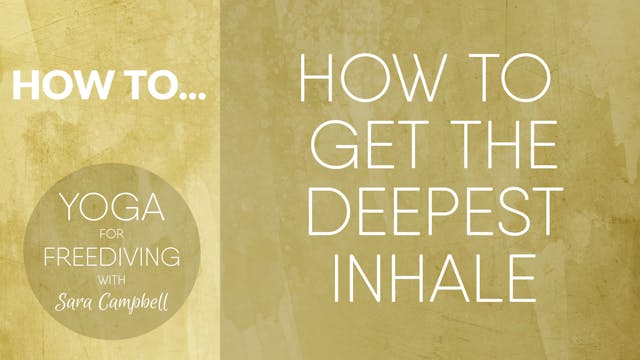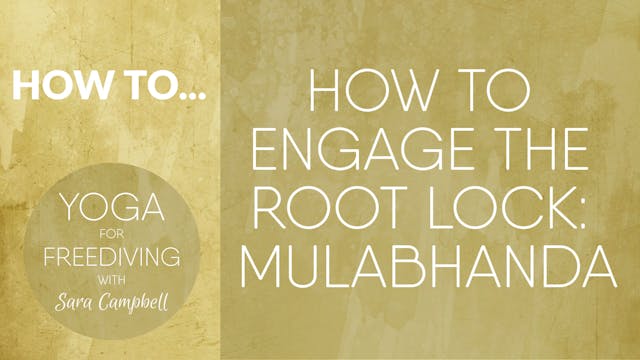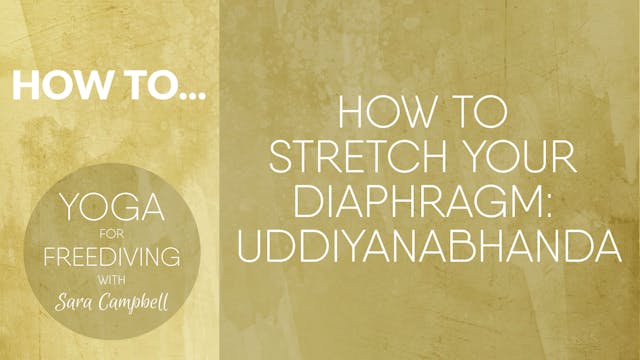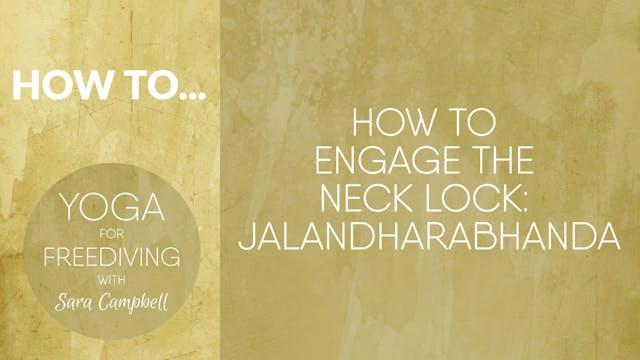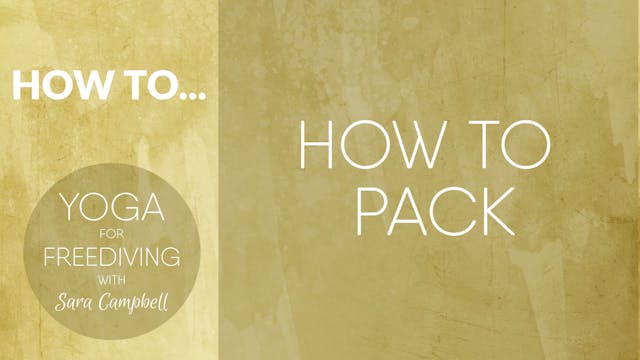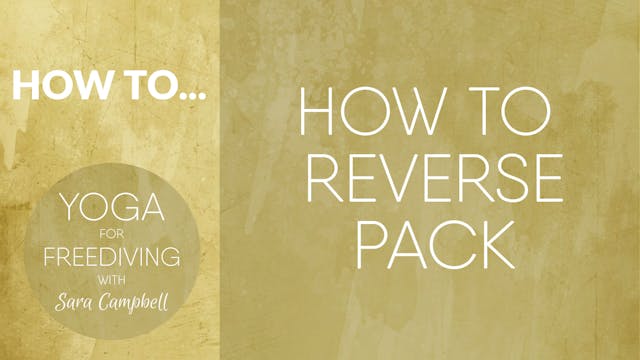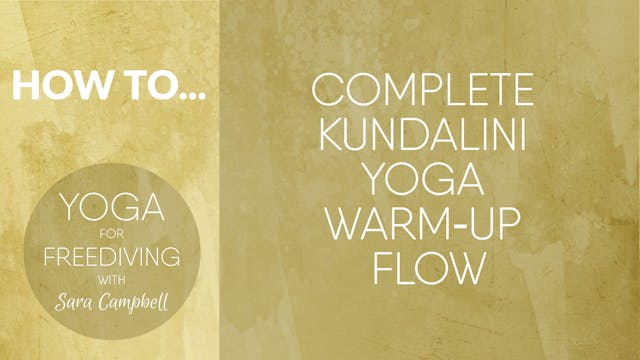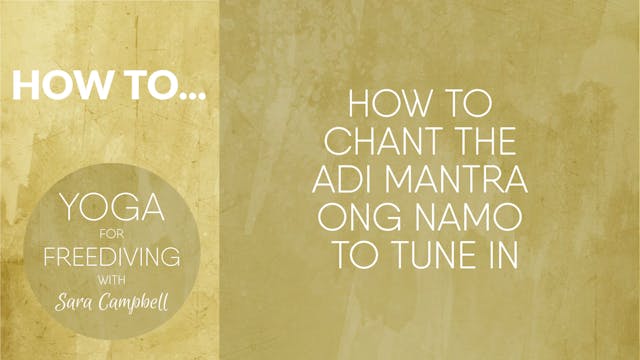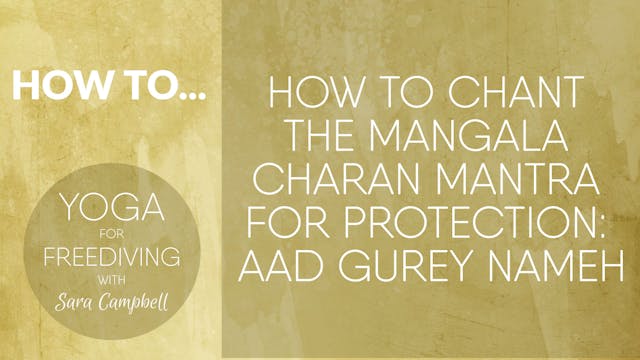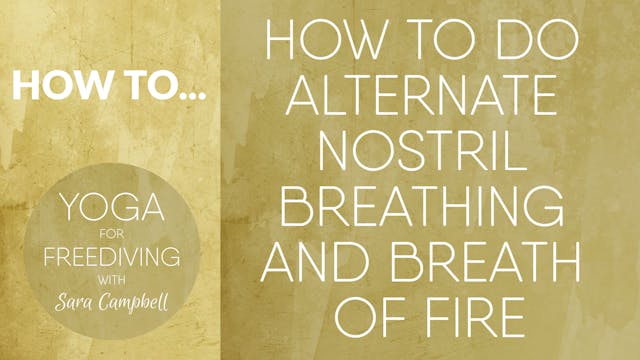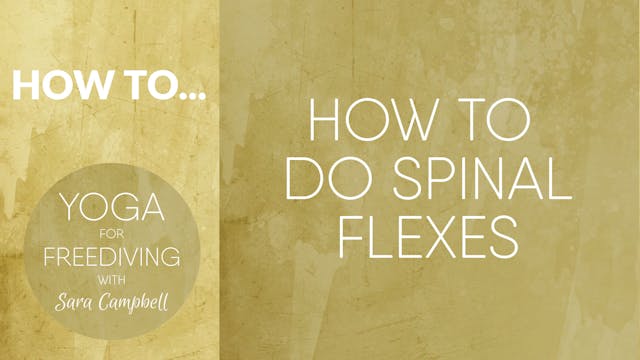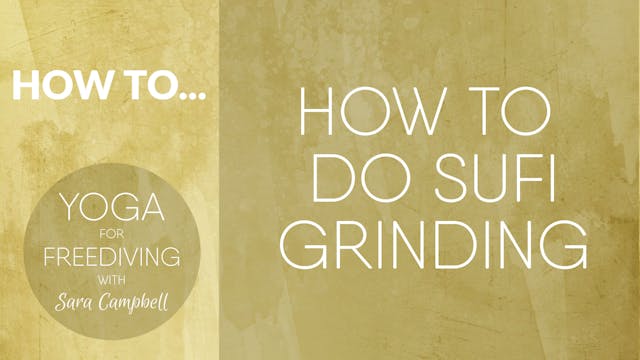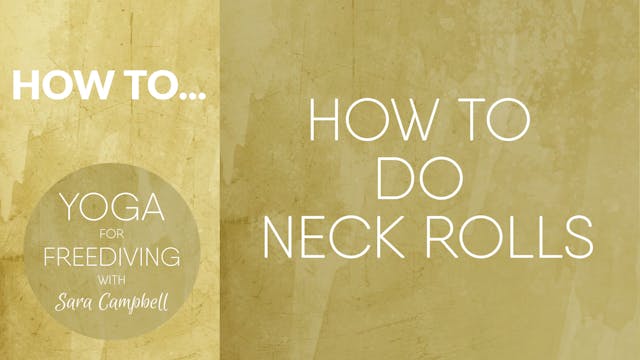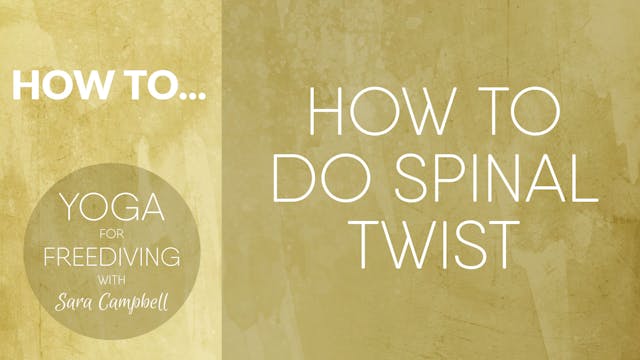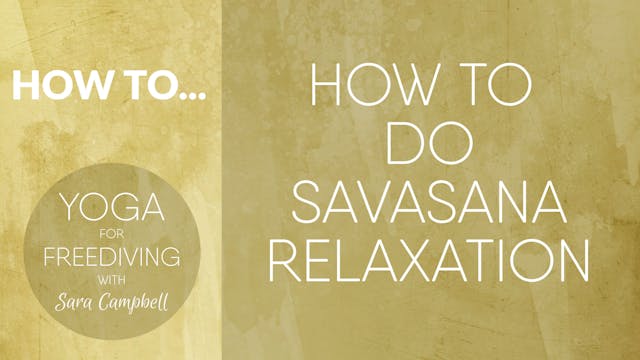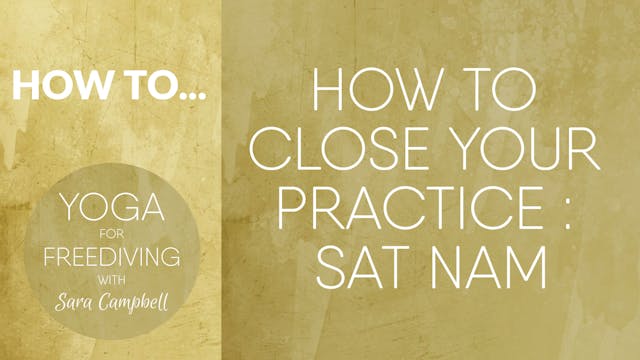Pre-Dive Preparation
Pre-Dive Preparation brings you two core stretching modules; pre-dive warm-ups based on Kundalini Yoga; and lung stretches. Both of these are key, particularly for deep diving, where adaptation to depth is essential.
I have used Kundalini Yoga throughout my freediving career - the ancient wisdom tradition of the teachings, the yogic understanding of the mind, and the physical exercises to get my body in the perfect state for diving. I often had people approach me when I was a relative beginner and tell me that these exercises were counter-productive to freediving, probably because nobody had ever used them. My personal experience, and that of the hundreds of students I have worked with over the years, tells me differently. These exercises, which I had adapted to incorporate the stretches I feel are most beneficial to freediving preparation, are the most effective way to get ready to get in the water. They open up the energy channels of the body for our Kundalini energy to flow, they oxygenate and cleanse the blood, stretch and tone the muscles, massage the inner organs, strengthen the nervous system and they are deeply relaxing also.
Lung stretches are an essential part of our physical training, not only to increase our inhale and thereby bring in more oxygen before a dive, but more importantly to decrease the residual capacity, i.e. the amount we are able to exhale, so that our lungs and surrounding tissue can compress further at depth, without injury or needing to rely on advanced equalisation techniques.
This is a step by step approach to lung stretches. As you practice any of these videos your capacity will increase both on the inhale and the exhale. It is important to progress slowly - even if you stay with the beginner exercises, your capacities will adapt and you will experience benefits on both ends of the scale. Don't be in a hurry to progress to the intermediate and advanced levels, allow the changes and adaptation to occur naturally, without forcing and rushing. Nature will take its course, your body will adapt, and it will do so best if you work with patience and respect for your body and the law of nature at work within you. Combine the warm-up exercises with the lung stretch sequences and you have a pre-dive warm-up which will target all the areas you need to focus on, mind, body and spirit - and you will notice the difference the moment you enter the water.
Videos in this course:
- Lecture: Pre-Dive Preparation Intro
- Warm-up routine: Beginners
- Warm-up routine: Intermediates
- Warm-up routine: Advanced
- Lecture: Lung Stretches Intro
- Lung Stretches: Beginners
- Lung Stretches: Intermediates
- Lung Stretches: Advanced
MORE ABOUT THIS COURSE
- Six videos and two and a half hours of targeted PRE-DIVE PREPARATION training
- A further two hours of tips and technique training in 22 "How to..." videos
- Video streaming on any mobile device
- Life time access to all videos and content
WHY IS PRE-DIVE PREPARATION IMPORTANT?
Pre-Dive Preparation wraps up the previous five courses, bringing the practical application of Kundalini Yoga to life within the realm of freedive training. The two sections in this course are both designed to get you in the right frame of body and mind for your dives. Very often freedivers don't know what to do BEFORE they get in the water, and find the first few warm-ups stressful and uncomfortable, needing time to calm down, get focused and start to really relax in the water. These exercises ensure that you are calm, focused and relaxed from the first warm-up onwards, saving you time, energy and effort - and if you're diving in colder waters, this can be crucial to getting the most out of your precious dive session.
Preparing yourself mind, body and soul for your diving is more than just a nice concept - if you really want to excel in the water, you need to know how to prepare yourself in a reliable way, rather than leaving your frame of mind and your relaxation to chance and circumstance. This gives you a clear, simple and super-effective routine, which will grow with you as you advance, to ensure you are 100% ready, 100% of the time.
PREMIUM clients will receive a personal online consultation and three one to one sessions with Sara.
-
PDP 1: Warm-ups Introduction
This video gives you an introduction to this routine to help you understand why it is so important and effective as a complement for all of your other training and pre-dive preparation.
-
PDP 2: Warm-ups Beginners
This beginners warm-up sequence is a fun but thorough work-out for all parts of the body that need to be prepared for diving. Focusing on the spine and upper body, they open up the subtle energy channels (meridians) to ensure optimal flow of life force and prana; they stretch and oxygenate the mu...
-
PDP 3: Warm-ups Intermediate
This warm-up routine builds on the beginners set, building up the stretches and encouraging you to go into the deeper connective tissues around the lungs, diaphragm and rib cage. The exercises will cleanse your blood stream and relax your mind as well as preparing your physical body for the deman...
-
PDP 4: Warm-ups Advanced
This advanced warm-up routine is for deep and competitive divers who really need to ensure they are ready for their dives the moment they enter the water. They are the exercises I did as preparation for my 100m+ dives, which I performed with no in-water warm-ups; proof that they really do work on...
-
PDP 5: Intro to Lung Stretches
This little introduction explains the importance of lung stretches, aiming to move freediving away from the damaging high-stress dives that result in injury, and encouraging us all to return to a healthy, balanced approach to our dives, which allows adaptation to occur at our individual rate. The...
-
PDP 6: Lung Stretches - Beginners
This first level of lung stretches is ideal for beginners as it teaches the basic stretch routine, preparing the lungs for the pressure of depths up to around 20-30m. It is recommended to master these stretches before progressing on to the more advanced routines, to strengthen your lung and airwa...
-
PDP 7: Lung Stretches - Intermediate
This intermediate lung stretch sequence builds on the first level, increasing the pressure and tension on both the inhale and exhale lung stretches. Divers who are reaching residual volume, ie reaching their frenzel failure depth, should ideally be working with these stretches.
-
PDP 8: Lung Stretches - Advanced
These advanced lung stretches are for divers who are using the mouthfill and are going to 50m and beyond. The pressure of these deep dives needs to be supported by dry exercises to ensure the lungs are flexible and strong and can handle the increasing pressure without suffering damage. It is advi...
-
About Meditation
ABOUT MEDITATION: If the mind is our most powerful servant, meditation is the way we ensure the servant receives clear instructions and does what we actually want him or her to do!
Without meditation our servant is free to do exactly what he wants, when he wants, and then we wonder why our di...
-
About Kriyas
ABOUT KRIYAS: The word 'kriya' means 'completed action'. It is therefore both a single exercise and a series of exercises that is designed to have a specific outcome. The kriyas in Kundalini Yoga work to direct energy within our body and mind by using specific breathing techniques combined with a...
-
About the Lectures
ABOUT LECTURES: This is as close to personal coaching with me as you can get without actually getting on a plane. These lectures form the basis of my teachings, primarily looking at, gaining awareness over, and learning to work with our minds, belief systems, and fears.
If you want to know ho...
-
About Pranayama
ABOUT PRANAYAMA: Pranayama are yogic breathing exercises based on ancient techniques and wisdom. 'Prana' refers both to our breath, and also to the life-force energy within and around us all. Pranayama therefore go beyond training simply our breath and breath hold capacity, but also work on how y...
-
Welcome to my free 'How to…' videos
ABOUT THE HOW TO... SERIES: This How to… series of videos contains bite-sized pieces of yogic and freediving wisdom, many of which were crucial in me diving to 104m on one breath!
DISCLAIMER: Yoga for Freediving courses and videos are not a freediving certification; they do not certify you to ...
-
How to Sit for Meditation
ABOUT SITTING: One of the greatest challenges to meditation is finding a comfortable sitting position. This short and simple video talks you through the options for all levels of flexibility.
The main focus for effective meditation is the position of your spine. As long as that is straight, i...
-
How to get the Deepest Inhale
ABOUT THE DEEPEST INHALE: Ever feel like you've taken your deepest inhale, but it's not quite deep enough? The chances are you are missing a very simple part of the inhale flow which will completely transform your final breath. Here I show you how.
For freedivers the final inhale is utterly c...
-
How to Engage the Root Lock : Mulabhanda
ABOUT THE ROOT LOCK: Mulabhanda, also known as mulbhand or the root lock, refers in western anatomy to the pelvic floor. This muscular lock which effectively closes off the lower end of the upper body, is essential in all parts of yoga, including meditation.
We use it to hold and direct energ...
-
How To Stretch your Diaphragm : Uddiyanabhanda
ABOUT DIAPHRAGM STRETCHING: Uddiyanabhanda relates to the diaphragm, as such it's the middle bhanda, between the root and the neck lock. In freediving, this little exercise can make or break depth progress.
Stretching uddiyanabhanda is one of the most important exercises you can do as a freedi...
-
How to Engage Neck Lock : Jalandharabhanda
ABOUT NECK LOCK: Jalandharabhanda, also called jalandabhand, or the neck lock, is essential in yoga and particularly in meditation.
It is also, for freedivers, known as the glottis - that tricky little bugger that you need to keep locked in order to keep your mouthfill.
Neck lock is taught...
-
How to Pack
ABOUT PACKING: Packing is a useful tool in freediving training. Packing must be introduced and used with CAUTION and respect as it carries certain risks and adverse effects for the freediver.
Packing when used in dry stretching routines is very useful for increasing the lung capacity, enablin...
-
How to Reverse Pack
ABOUT REVERSE PACKING: Reverse packing, as the name suggests, is the opposite of packing - and is essential for safe, deep diving.
Many people, particularly early on in their training, focus on packing in order to expand their lung volume. However, for anyone wanting to dive deep, reverse pac...
-
Complete Kundalini Yoga Warm-Up Flow
ABOUT THE FLOW: These warm-up exercises can be used to prepare for other practice, or can be used in their own right. This flow will leave you energised, yet relaxed.
I used and adapated these exercises to prepare myself for my deep freedives and I know they have helped all of my students to ...
-
How to chant the Adi Mantra Ong Namo to Tune In
ABOUT ONG NAMO: We begin every practice of Kundalini Yoga with the Adi Mantra: "Ong Namo Guru Dev Namo'. This mantra is the foundation for my four World Records in freediving.
I explain more about this magical mantra in my DEEP RELAXATION programme, but learning to chant it, and enjoying the ...
-
How to chant the Mangala Charan Mantra for Protection : Aad Gurey Nameh
ABOUT AAD GUREY: This mantra is often used after the Adi Mantra when tuning in for our practice, but it can be used alone and is great for protection.
Chanting mantra is not the same as singing. It doesn't matter if you have a good voice, or are in tune. It is about the vibrations you create ...
-
How to do Alternate Nostril Breathing and Breath of Fire
ABOUT PRANAYAMA: These two simple breathing exercises, or pranayamas, are two of the most important yoga breaths you will learn.
Alternate nostril breathing is great for bringing awareness to the breath, the sensations of the breath and for creating balance.
Breath of Fire is used to stimu...
-
How to do Spinal Flexes
ABOUT SPINAL FLEX: Spinal Flex exercises help us to systematically warm-up and wake up the spine. Our spine performs so many amazing functions for us throughout our daily lives that it deserves and needs to be looked after and given a bit of love. This is the perfect way.
Along with the other...
-
How to do Sufi Grinding
ABOUT SUFI GRINDING: The poor Sufis…. Haha! Don't worry, no-one was harmed in the making of this video! :-)
Sufi grinding is my favourite yoga warm-up exercise and here I show you how to do it. It helps to soften and relax the whole of the spine, encourages deep, powerful breathing which clea...
-
How to do Neck Rolls
ABOUT NECK ROLLS: Neck rolls are a simple part of our yoga and freediving stretches. We all carry stress and tension in our neck, throat, jaw, shoulders and upper back and this simple exercise can help us to identify and release some of it.
For freedivers suffering equalisation problems, the i...
-
How to do Spinal Twist
ABOUT SPINAL TWISTS: Let's do the twist! This yogic version of the twist focuses on the spine, this time increasing its flexibility through the vertical axis. It opens up our chest and shoulders, helps to stretch and tone the waist and gives all of your digestive organs a wonderful massage.
Al...
-
How to do Savasana Relaxation
ABOUT RELAXATION: Use this little video on its own when you want a quick time-out from your day, or a boost to your energy. It is essential we balance our stressful lives with regular relaxation - here's how!
It is recommended to practice this every day for 11 minutes if you're a man, and thr...
-
How to Close your Practice: Sat Nam
ABOUT SAT NAM: We end all of our yoga and meditation practices with Sat Nam. It means 'I am Truth' or 'Truth is what I am' and is a way to connect with our authentic self, beyond our perceptions and beliefs of who or what we think we should be.
The mantra also appears in many of the meditation...
